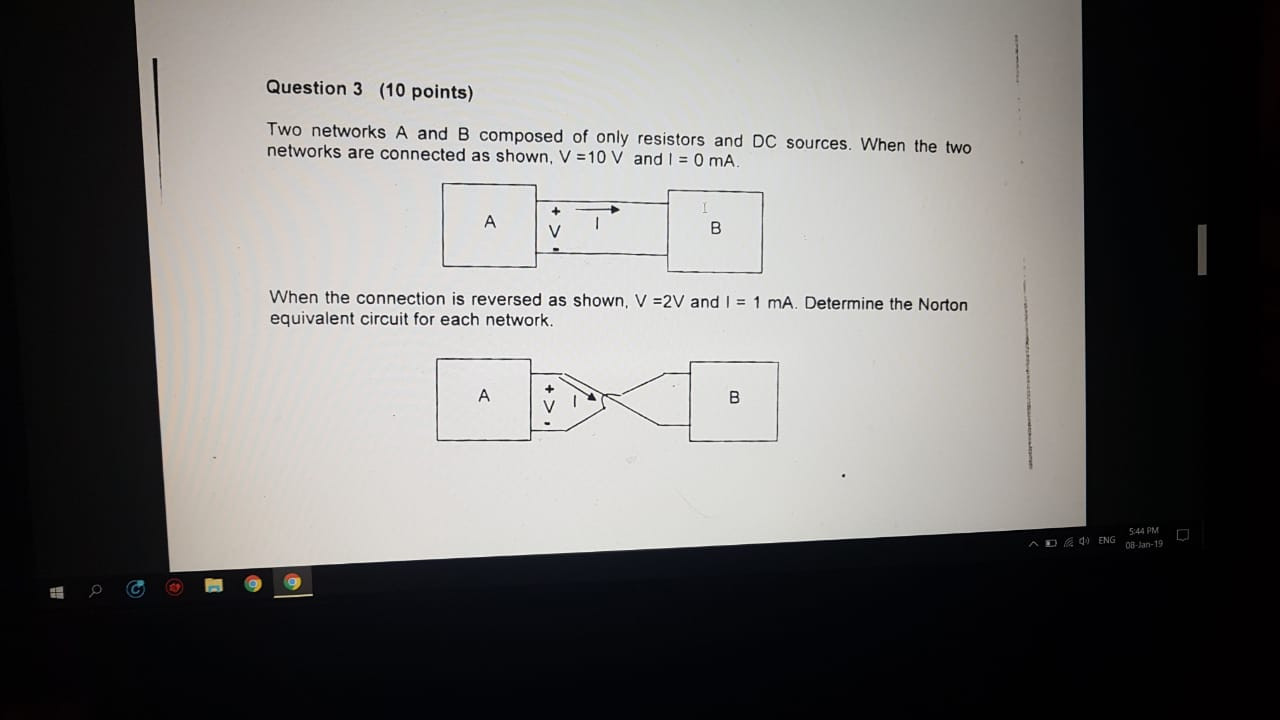Something confuses me an exam ..
As u can see in the image below .. I just don't get it .. in the fig 1, the polarity in both A and B networks were the same, that is why there was no current flowing .. but in fig 2, he reversed the connections .. so that means that he also reversed the polarity, in another meaning, the + in network a ----> the - in network b and vise versa .. am I mistaken ? or right ? *There is no clear solution for me in this question so I will be asking the one who answered a lot of questions.*
edit : network A and B only have 1 Current source + 1 Resistor
Another question, is reversing the current source direction affects the polarity ?
Sorry for being talkative, but I'm really confused and the exam is around the corners.
Thanks in advance. ?

